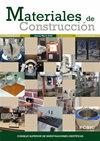Influence of citric acid on the fire behavior of gypsum coatings of construction and structural elements
IF 1.5
4区 工程技术
Q3 CONSTRUCTION & BUILDING TECHNOLOGY
引用次数: 3
Abstract
To improve the workability in gypsum plasters, additives are sometimes used, including citric acid, which provides acceptable setting times for low w/g ratios, maximizing the mechanical properties of the material. The influence of citric acid on the fire response of gypsum coatings is not well known, and so our aim was to analyze the effects that citric acid produces on the behavior of gypsum plasters exposed to fire. Temperature measurements were made with sensors and thermal imaging cameras while other instrumental techniques, including SEM, XRD and TG, were used to characterize the microstructure and composition of gypsum materials subjected to the action of fire. The fire had a greater effect on gypsum plasters containing citric acid as revealed by the cracking patterns and heat propagation profiles observed. Likewise, micro-cracks were observed in gypsum specimens, containing and non-containing citric acid, exposed to fire. In all cases, the alterations were consistent with the temperature profiles and chemical composition of the faces whether exposed to fire or not.柠檬酸对建筑结构构件石膏涂料防火性能的影响
为了提高石膏的可加工性,有时会使用添加剂,包括柠檬酸,它为低w/g比提供了可接受的凝结时间,从而最大限度地提高了材料的机械性能。柠檬酸对石膏涂料火灾响应的影响尚不清楚,因此我们的目的是分析柠檬酸对暴露于火灾中的石膏行为的影响。使用传感器和热成像相机进行温度测量,同时使用其他仪器技术,包括SEM、XRD和TG,来表征受火灾作用的石膏材料的微观结构和成分。火灾对含有柠檬酸的石膏产生了更大的影响,从观察到的开裂模式和热传播曲线可以看出。同样,在暴露于火中的含有和不含有柠檬酸的石膏样品中也观察到了微裂纹。在所有情况下,无论是否暴露在火中,这些变化都与表面的温度分布和化学成分一致。
本文章由计算机程序翻译,如有差异,请以英文原文为准。
求助全文
约1分钟内获得全文
求助全文
来源期刊

Materiales de Construccion
工程技术-材料科学:综合
CiteScore
3.20
自引率
9.50%
发文量
38
审稿时长
>12 weeks
期刊介绍:
Materiales de Construcción is a quarterly, scientific Journal published in English, intended for researchers, plant technicians and other professionals engaged in the area of Construction, Materials Science and Technology. Scientific articles focus mainly on:
- Physics and chemistry of the formation of cement and other binders.
- Cement and concrete. Components (aggregate, admixtures, additions and similar). Behaviour and properties.
- Durability and corrosion of other construction materials.
- Restoration and conservation of the materials in heritage monuments.
- Weathering and the deterioration of construction materials.
- Use of industrial waste and by-products in construction.
- Manufacture and properties of other construction materials, such as: gypsum/plaster, lime%2
 求助内容:
求助内容: 应助结果提醒方式:
应助结果提醒方式:


